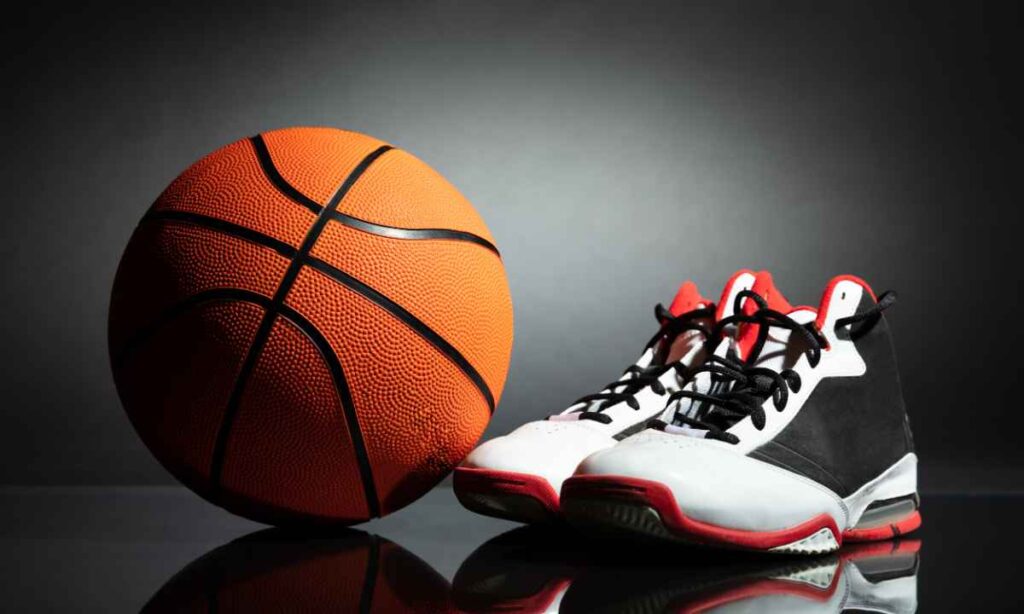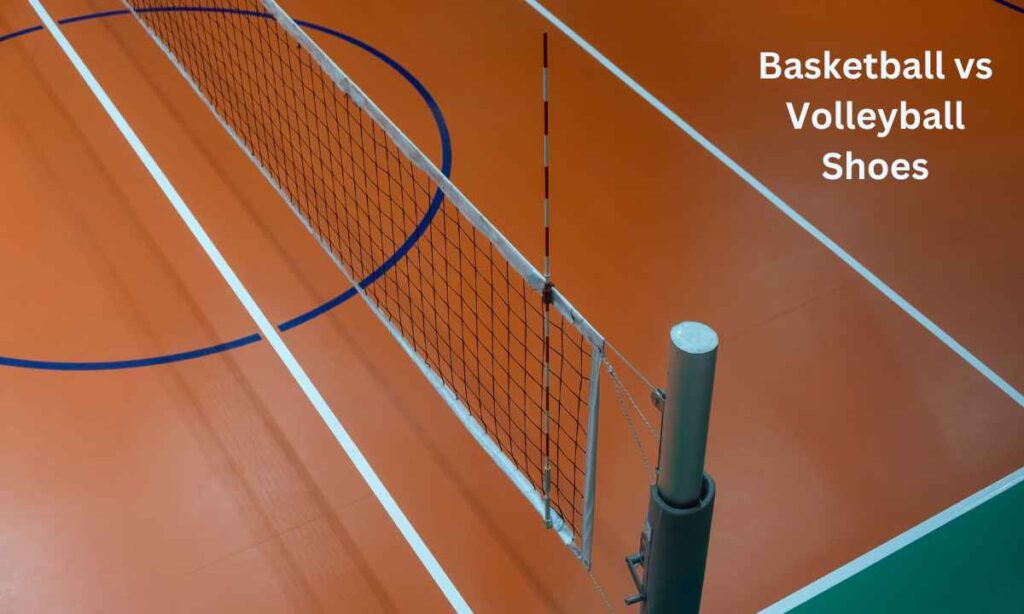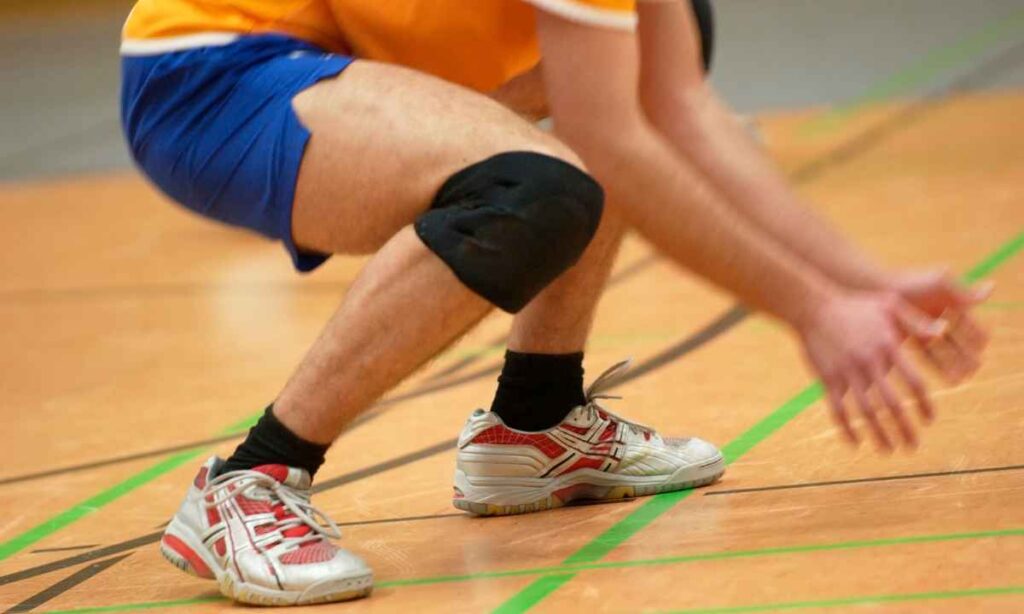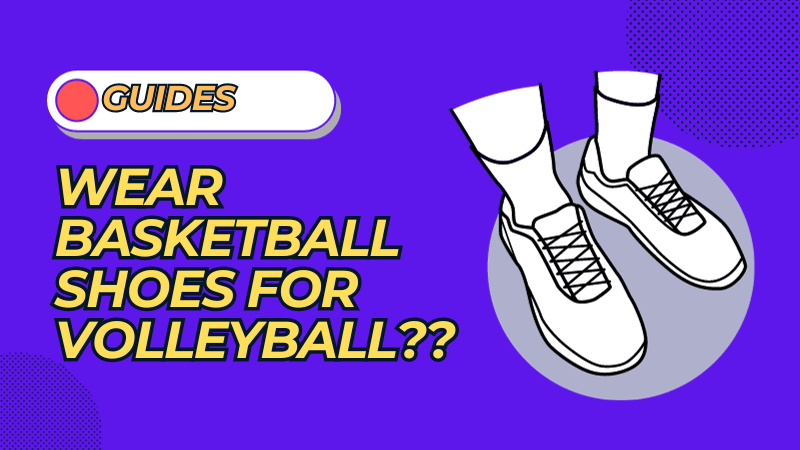Volleyball is a sport of precision, energy, and technique, where every piece of equipment plays a crucial role in performance. For many players, especially those on a budget, deciding between basketball and volleyball shoes can be a perplexing dilemma.
Basketball shoes often seem appealing, offering better stability and being generally more affordable, but is this a wise choice for the volleyball court? Many players wear basketball shoes for volleyball, believing these shoes offer better grip and stability on the court, yet others argue that they may not provide the best performance or protection for volleyball’s unique movements and demands.
This issue touches upon comfort, traction, impact absorption, and even injury risks. In this article, we’ll delve into the nuanced differences between basketball and volleyball shoes, shedding light on the subject to help you make the best choice for your game.
Let’s dig into the facts and find out what really matters on the court!
Can You Wear Basketball Shoes for Volleyball?
Yes, basketball shoes can be used for playing volleyball. Many players opt for basketball shoes when engaging in volleyball, feeling that these shoes offer better stability and grip on the court. Additionally, basketball shoes are often less expensive, making them an attractive option for those on a tight budget.
However, it’s essential to consider the specific needs of the sport. While basketball shoes may offer certain advantages, they may not always provide the best performance or protection for volleyball’s unique movements and demands.
Volleyball involves a lot of jumping, quick directional changes, and lateral movements, and basketball shoes might not provide enough support in these areas. Understanding the difference between the cushioning, ankle support, and sole design of basketball and volleyball shoes will help you make an informed decision that best suits your playing style and the demands of the game.
The studies conducted in 2017, further emphasize the importance of proper cushioning and the potential impact of the shoe type on performance. By weighing the pros and cons, you can find the footwear that best fits your needs on the volleyball court.
What Makes a Good Basketball Shoe for Volleyball?

Moving on to the crucial aspects of selecting basketball shoes for volleyball, it’s important to understand the specific characteristics that can make them suitable for the court. Volleyball is a sport that demands a lot more than just running; it involves jumping, landing, and quick changes in direction. Therefore, the shoes must cater to these needs. Here’s a detailed look at what makes a good basketball shoe for volleyball:
Comfort
Comfort is paramount when choosing basketball shoes for volleyball. Look for shoes that fit well and provide adequate support for your feet. Shoes that feel comfortable can enhance performance, allowing players to focus on the game without being distracted by foot discomfort. The lack of sufficient volleyball shoe options, as noted in the study “Factors Influencing Collegiate Volleyball Shoe Selection,” emphasizes the importance of comfort in shoe selection.
Jumping Technology
Volleyball involves a lot of jumping, so shoes with good jumping technology are vital. Basketball shoes that offer cushioning in the heel and forefoot can help absorb the impact of jumping, making them a suitable option for volleyball. The extra cushioning in basketball shoes can be advantageous for players who jump and land frequently.
Traction
Traction is vital for quick starts, stops, and changes of direction on the court. Basketball shoes must have a sole design that provides a good grip on indoor court surfaces. While they may not be as grippy as specialized volleyball shoes, certain basketball shoes can still offer satisfactory traction for volleyball players.
Impact Absorption
With all the jumping and landing in volleyball, shoes with good impact absorption are critical. The study “Influence of sports flooring and shoes on impact forces and performance during jump tasks” highlights the significance of shoe materials in reducing impact force peaks. Basketball shoes with cushioning in the heel and forefoot can help absorb these impacts.
Quick Directional Changes
Volleyball requires a lot of quick directional changes. Shoes with a lightweight design that allows for quick movements on the court are vital. Basketball shoes that are not too heavy can support these rapid shifts in direction, enabling players to respond swiftly to the game’s dynamic nature.
Landing
Landing is a crucial part of volleyball, and shoes that provide good support and cushioning for landing are essential. Like the impact absorption quality, the cushioning in the heel and forefoot of basketball shoes can help absorb the impact of landing, supporting the unique demands of volleyball. This alignment with the sport’s requirements makes certain basketball shoes viable for volleyball players.
Basketball vs Volleyball Shoes – Understanding the Difference

Continuing from our exploration of the suitability of basketball shoes for volleyball, it becomes essential to delineate the key differences between basketball and volleyball shoes. While overlapping characteristics may exist, understanding these distinctions is vital for selecting the right footwear for either sport. Here’s a detailed breakdown that unveils the nuanced differences between basketball and volleyball shoes:
Sole Design and Traction
While both types of shoes require traction, volleyball shoes typically have a sole design that provides enhanced grip on indoor court surfaces. On the other hand, basketball shoes may not be as grippy, which can impair a player’s ability to stop and start quickly. This difference in the sole design highlights the specific requirements of each sport and the need for specialized footwear.
Cushioning and Support
Volleyball shoes have cushioning in the heel and forefoot to absorb the impact of jumping and landing. Basketball shoes usually have more cushioning in the heel, which can be advantageous for volleyball players who jump and land frequently. However, the cushioning in basketball shoes may not provide the necessary support for the lateral movements required in volleyball, thereby increasing the risk of ankle injuries.
Ankle Support and Mobility
Ankle support is another critical aspect where these two types of shoes diverge. Volleyball shoes are designed to provide adequate support for lateral movements, reducing the risk of ankle injuries. Basketball shoes, conversely, may lack enough ankle support for the specific lateral movements required in volleyball. According to the study on “Biomechanical Characteristics between Bionic Shoes and Normal Shoes during the Drop-Landing Phase,” ankle support can greatly influence biomechanics during landing, emphasizing the need for sport-specific footwear.
Comfort
While comfort is a shared priority for both basketball and volleyball shoes, the selection criteria and design might differ. The study “Factors Influencing Collegiate Volleyball Shoe Selection” highlights how choices are influenced by medical concerns, benefits of the school’s athletic apparel contracts, and available options. Basketball shoes’ emphasis on forward and backward movement support may not align perfectly with the unique demands of volleyball.
Jumping Technology
Though both sports involve jumping, the technology required may differ. As mentioned earlier, cushioning plays a significant role in both types of shoes, but the specific design may vary to cater to the jumping patterns in each sport.
Traction
While traction is vital for both basketball and volleyball, the sole design in volleyball shoes might offer a more specialized grip for indoor court surfaces. Basketball shoes may lack this specificity, potentially affecting performance.
Impact Absorption
Both shoes need to absorb impact, especially for jumping and landing. However, the focus on materials and design may differ between the two, as noted in the study “Influence of sports flooring and shoes on impact forces and performance during jump tasks.” Understanding these variations can guide players in making an informed choice between basketball and volleyball shoes.
Can You Wear Volleyball Shoes for Basketball?
Yes, volleyball shoes can be worn for playing basketball. However, while they can be used for basketball, they may not provide the best performance or protection for basketball’s unique movements and demands.
Volleyball shoes are designed specifically for the needs of volleyball players, including support for lateral movements, grip on indoor court surfaces, and cushioning for frequent jumping and landing. When used for basketball, these design features may not align perfectly with the game’s requirements.
Basketball emphasizes forward and backward movements more and may demand different levels of cushioning and support. While the sole design and traction of volleyball shoes might suffice for casual basketball play, professional or competitive players might find them lacking in certain areas. This mismatch could potentially lead to decreased performance or even an increased risk of injuries.
Furthermore, the selection of basketball shoes often includes factors like player position and playing style, which might not be catered to by volleyball shoes. So, although volleyball shoes can be worn for playing basketball, careful consideration of the game’s specific requirements is advisable to ensure optimal performance and safety on the court.
Also, Read: Volleyball Tips for Beginners
Is Something Really Wrong with the Volleyball Shoes?

No, there is nothing inherently wrong with volleyball shoes. In fact, they are designed specifically for the unique movements and demands of volleyball, and they can provide better performance and protection on the court.
Volleyball shoes are crafted to meet the needs of the sport, including the frequent jumping, landing, quick directional changes, and lateral movements that characterize the game. The concern often arises when volleyball shoes are compared to or used for other sports, such as basketball.
What might be perceived as a flaw or lack when using volleyball shoes in another sport is actually a feature tailored for volleyball itself. For example, the sole design that offers excellent grip on indoor volleyball courts may not provide the same level of traction on a basketball court. Similarly, the support and cushioning built to absorb the impact of volleyball movements might not align with the different demands of another sport.
In essence, volleyball shoes are highly specialized for their intended purpose. The perception that something might be wrong with them likely stems from misunderstandings or misapplications rather than any inherent design flaw. So, if you’re engaging in volleyball, choosing shoes specifically designed for the sport is likely the best choice to ensure optimal performance and comfort.
Conclusion
In conclusion, choosing between volleyball and basketball shoes involves understanding each sport’s specific demands and movements. While basketball shoes can be used for playing volleyball, offering some benefits like increased cushioning, they may not provide optimal performance or protection for volleyball’s unique needs.
On the other hand, volleyball shoes are designed with the sport’s requirements in mind, offering features such as specialized sole design, ankle support, and precise impact absorption. The comparison between the two types of shoes illustrates the importance of selecting footwear based on comfort, jumping technology, traction, and other factors specific to the sport you are playing.
Using volleyball shoes for basketball may not provide the best performance either, further emphasizing the importance of sport-specific footwear. The notion that something might be wrong with volleyball shoes is a misconception, as they are crafted to meet the unique demands of volleyball, ensuring better performance and protection on the court.
FAQs
Are Basketball Shoes Too Heavy for Volleyball?
Basketball shoes may be heavier than volleyball shoes, which could potentially slow down a player’s movements on the court. While it’s not impossible to use basketball shoes for volleyball, the weight difference might affect agility and quick directional changes.
Can Basketball Shoes be Used for Volleyball?
Yes, basketball shoes can be used for playing volleyball. Many players wear basketball shoes when playing volleyball, as they feel that these shoes offer better stability and grip on the court. However, they might not provide the best performance or protection for volleyball’s specific movements.
Is There a Difference between Basketball Shoes and Volleyball Shoes?
Yes, there are significant differences between basketball shoes and volleyball shoes, especially in terms of sole design and traction, cushioning and support, and ankle support and mobility. Volleyball shoes are designed specifically for the sport’s unique requirements, while basketball shoes focus on forward and backward movements.
What Shoes Are Good for Volleyball?
Good volleyball shoes are those that provide comfort, good jumping technology, traction, impact absorption, quick directional changes, and landing support. Features such as cushioning in the heel and forefoot, along with a sole design that offers grip on indoor court surfaces, are essential.
Can You Wear Volleyball Shoes for Basketball?
Yes, volleyball shoes can be worn for playing basketball. However, they may not provide the best performance or protection for basketball’s unique movements and demands due to the differences in design and focus between the two types of shoes.
Do Basketball Shoes Work for Volleyball?
Basketball shoes can be used for playing volleyball but may not be the ideal choice. The design of basketball shoes may not provide enough support for the lateral movements required in volleyball or offer optimal grip on indoor court surfaces, leading to a potentially increased risk of injuries and a possible decrease in performance.

